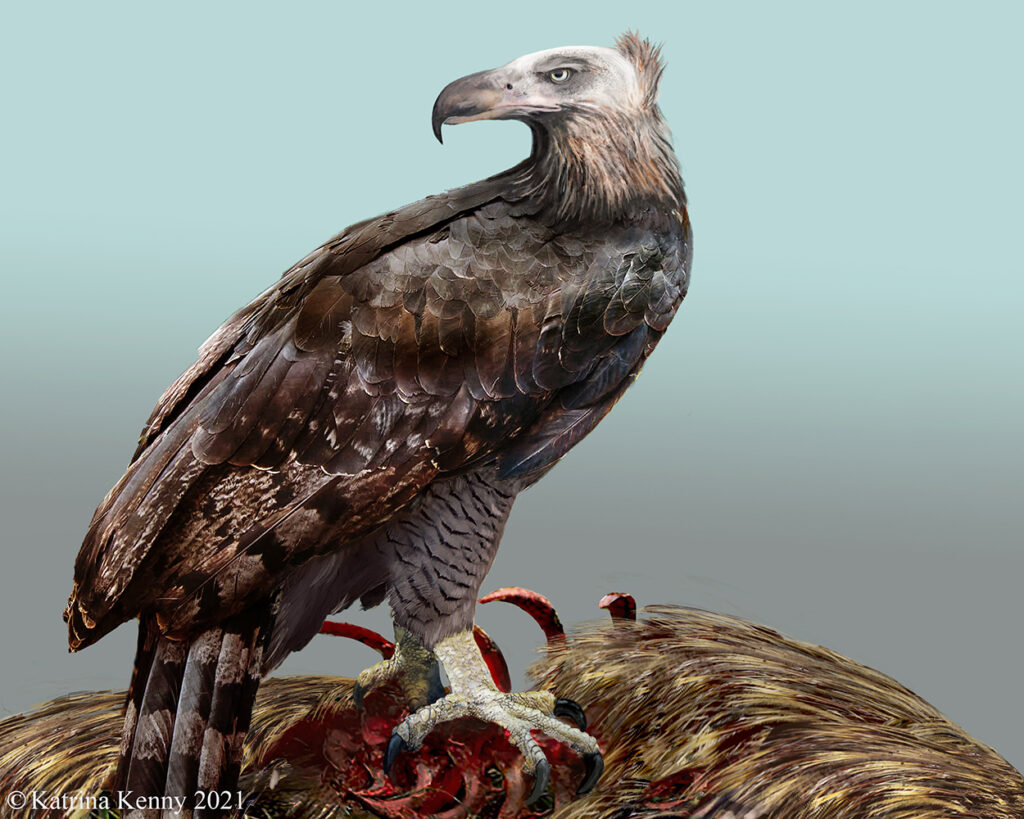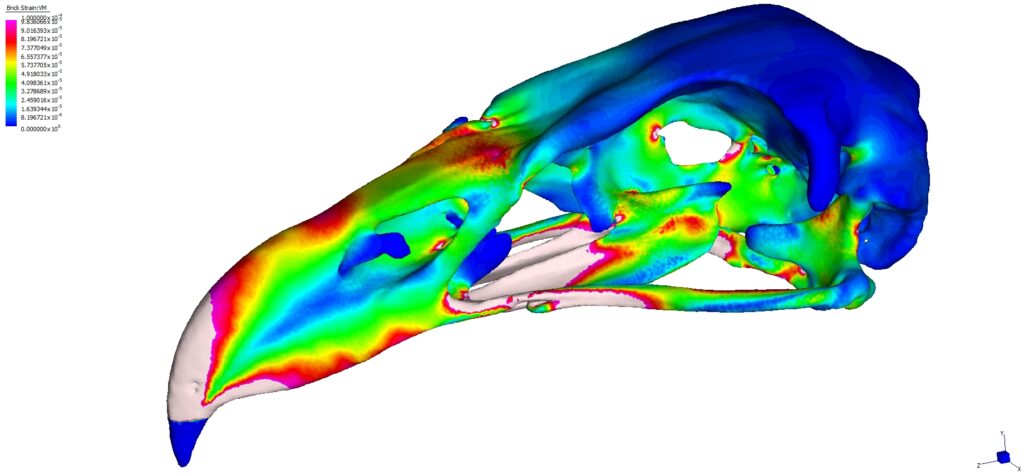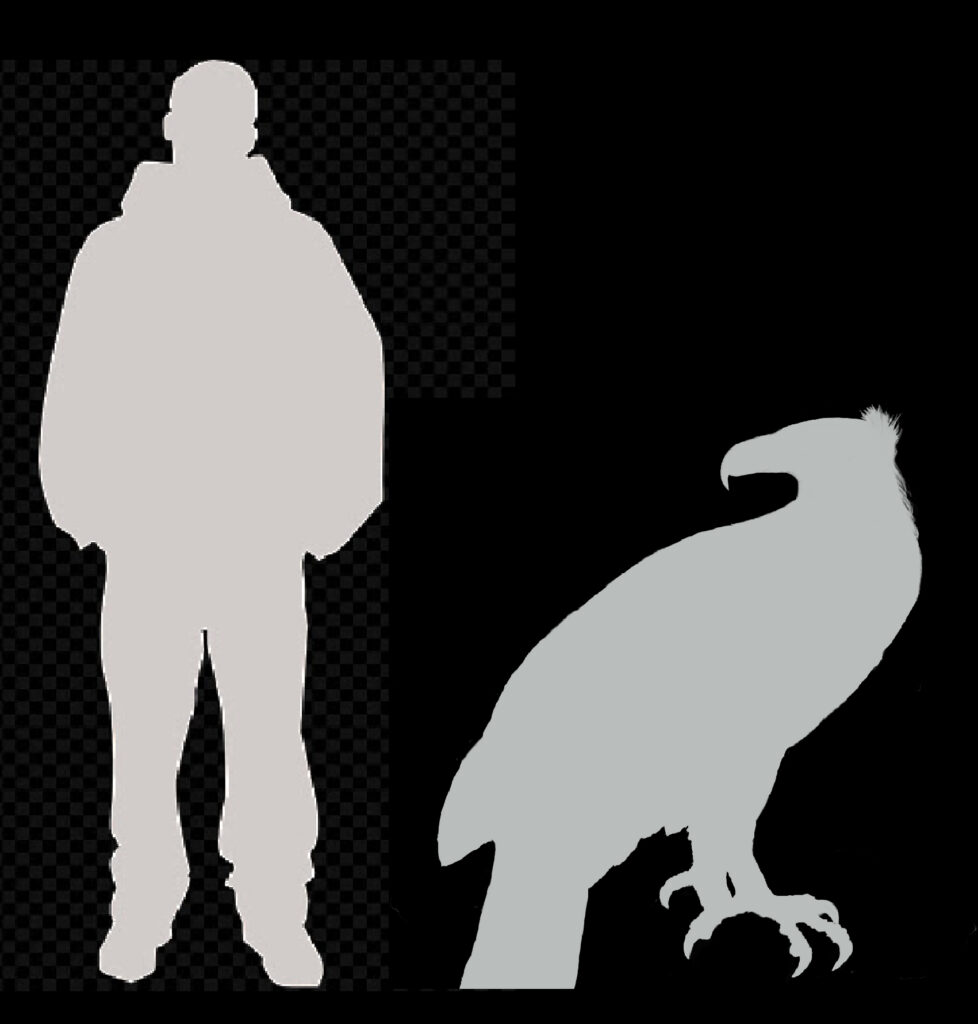Haast’s eagle preferred giant prey like a vulture
Bavarian State Collection of Zoology
The extinct Haast’s eagle (Hieraaetus moorei) is the largest known eagle. New research findings suggest that the giant eagle was an active hunter using its talons and beak to restrain and kill huge terrestrial birds, then feeding on the carcass like a vulture due to a preference for internal organs. An international team of scientists led by SNSB zoologist Anneke van Heteren used 3D computer models to compare the skulls and talons of extant hunting and scavenging birds to those of the Haast’s eagle. The researchers have now published their results in the journal Proceedings of the Royal Society B: Biological Sciences.
The extinct giant Haast’s eagle, was twice the size of any living eagle. The oldest fossil record of the giant eagle comes from New Zealand and is about 35,000 years old. Researchers suggest the bird disappeared about 800 years ago. Despite its size, the Haast’s eagle is related to one of the world’s smallest eagles, the Australian little eagle Hieraaetus morphnoides. Debate over whether the Haast’s eagle displays vulture-like features and what their function might be continues to be highly contentious.
An international team of researchers led by Anneke van Heteren, head of the mammalogy section at the Bavarian State Collection of Zoology (SNSB-ZSM), has now discovered that the giant eagle was probably an active hunter and preyed on huge terrestrial birds that were significantly larger than itself. Then he fed on the carcass like a vulture due to a preference for internal organs.
The shape of the skull, beak and talons of birds of prey are adaptations to their way of feeding. The researchers compared the shape and biomechanical performance of the Haast‘s eagle’s skull and talons with those of five extant scavenging and predatory birds: They used the geometric morphometrics method: 3D computer models marked with significant measuring points, so-called digital “landmarks”. The scientists combined these analyses with computer-based simulations to visualize the biomechanical performance of the skulls and talons during killing and feeding.
The shape of the Haast‘s eagle’s neurocranium is vulture-like, its beak and talons eagle-like. The biomechanical performance of the bird’s head movements showed that the average strain of the skull bone while killing was lowest in the Haast’s eagle. Apparently, its bite was more powerful than that of the extant eagles. However, the giant eagle then fed more vulture-like: its skull shows typical vulture-like strains when pulling back and shaking its head sideways. These strains are quite similar to the Andean condor‘s skull, which mainly extracts the internal organs of carcasses. The talons of Hieraaetus moorei were eagle-like: large, curved, and pointed. The simulated strains on Haast’s eagle’s talons when grasping prey was significantly lower than in the other birds, indicating it was capable of withstanding extremely high forces.
“The biomechanical simulations of the talons and skulls show us that Haast‘s eagle’s prey was probably significantly larger than itself. Only vultures usually feed on prey this large. Eagles tend to kill and eat smaller prey. We suggest that the Haast‘s eagle stuck its head deep into carcasses to extract internal organs, like a vulture. Evolutionary processes on islands are often quite rapid. The Haast‘s eagle is very different from its closest living relative the Australian little eagle. The evolution of a mosaic of eagle- and vulture-like traits, like in Hieraaetus moorei, could have been a response to very strong selection pressures”, Anneke van Heteren interprets the results of the study.
The results of the computer simulations are additionally supported by fossil findings from New Zealand: the prey of Haast‘s eagle included moas – extinct large New Zealand landbirds. The largest moa weighed about 200 kilos. Haast‘s eagle possibly even looked quite similar to a bald vulture, as a Maori rock art depiction discovered on the South Island of New Zealand shows.
Publication:
van Heteren A. H., Wroe S., Tsang L. R., Mitchell D. R., Ross P., Ledogar J. A., Attard M. R. G., Sustaita D., Clausen P., Scofield R. P. and Sansalone G. 2021 New Zealand’s extinct giant raptor (Hieraaetus moorei) killed like an eagle, ate like a condor Proc. R. Soc. B. 2882021191320211913
http://doi.org/10.1098/rspb.2021.1913
Contact:
PD Dr. Anneke H. van Heteren
Zoologische Staatssammlung München (SNSB-ZSM)
Münchhausenstraße 21, 81247 München
Tel.: 0151 651 617 15
E-Mail: vanHeteren@snsb.de
Reconstruction of the Haast’s eagle (Artist: Katrina Kenny) Distribution of strain through the Haast’s eagle skull while pulling the skull back during feeding. Under the pullback simulation, Haast’s eagle showed relatively low strains (cooler colours, like blue and green), comparable to that of the scavenging Andean Condor and cinereous vulture. The wedge-tailed eagle, the whistling kite and its closest relative, the little eagle, recorded higher strains. (Image: Anneke van Heteren, SNSB) The silhouettesof man and Haast’s eagle (Image: Stephen Wroe)




